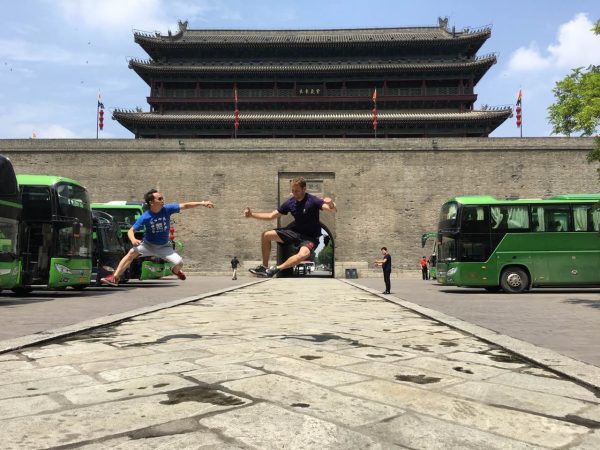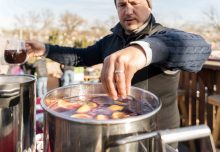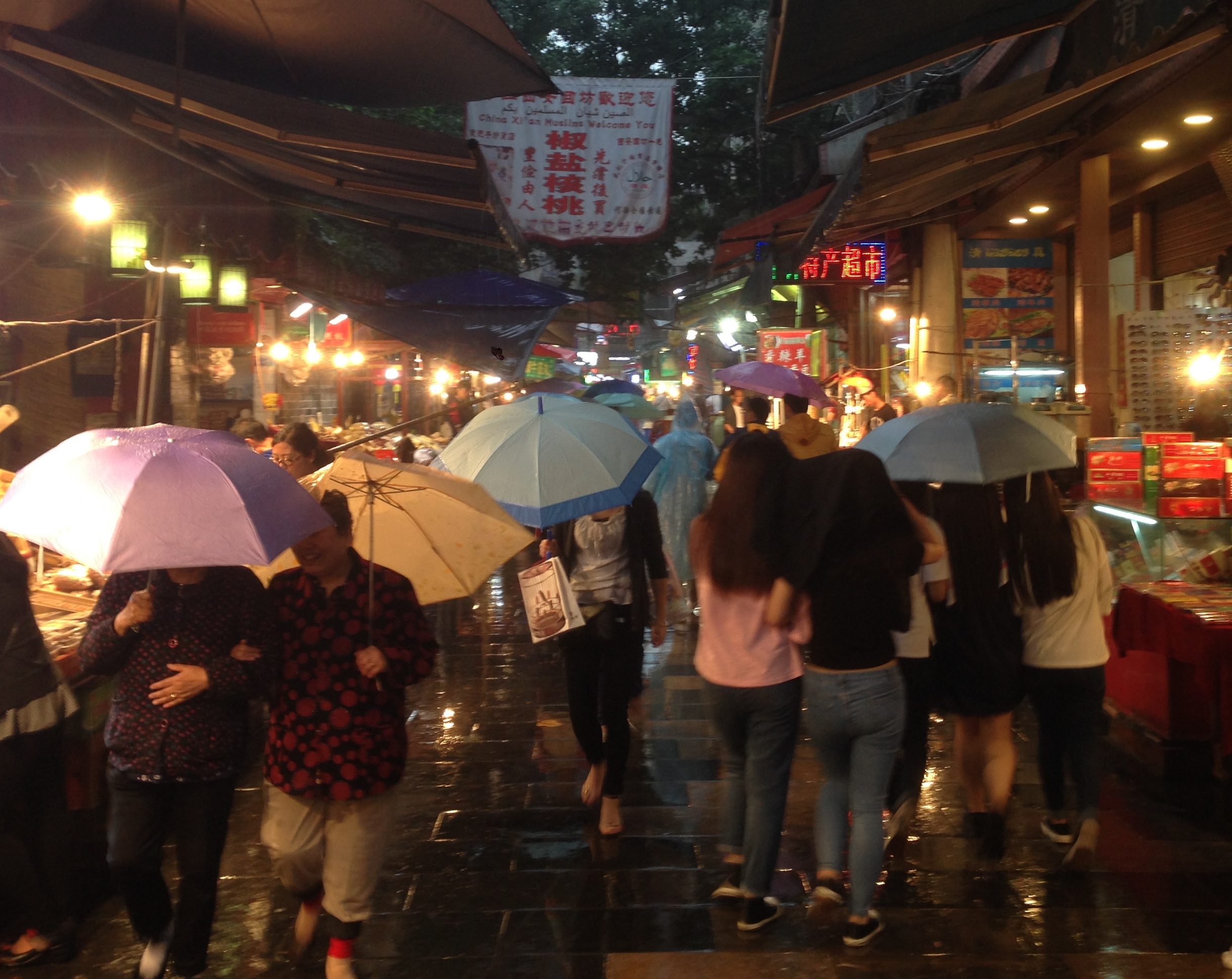
By Danielle Laing
I refuse to let the rain put a damper on my appetite.
It’s late afternoon but you’d think it’s nighttime. Dark clouds loom overhead and neon lights stretch ahead on either side of the walking street in Xi’an’s vibrant Muslim Quarter, giving everything a kind of Blade Runner vibe.
Xi’an, once an ancient imperial capital and the eastern end of the Silk Road, was an important crossroads of cultures, religions, and trade. Now, it is a bustling, modern city boasting ancient tombs, the Terracotta Warriors, beautiful pagodas and 600-year old city walls.
Here on Huimin Jie, the neon is a stark contrast to the cobblestones, head coverings, and traditional Huizhou-style architecture of the buildings. The rain pours steadily, forming rivulets on the road and forcing visitors under a network of umbrellas and overhangs. And yet despite the weather, the hordes are out – and they are hungry.
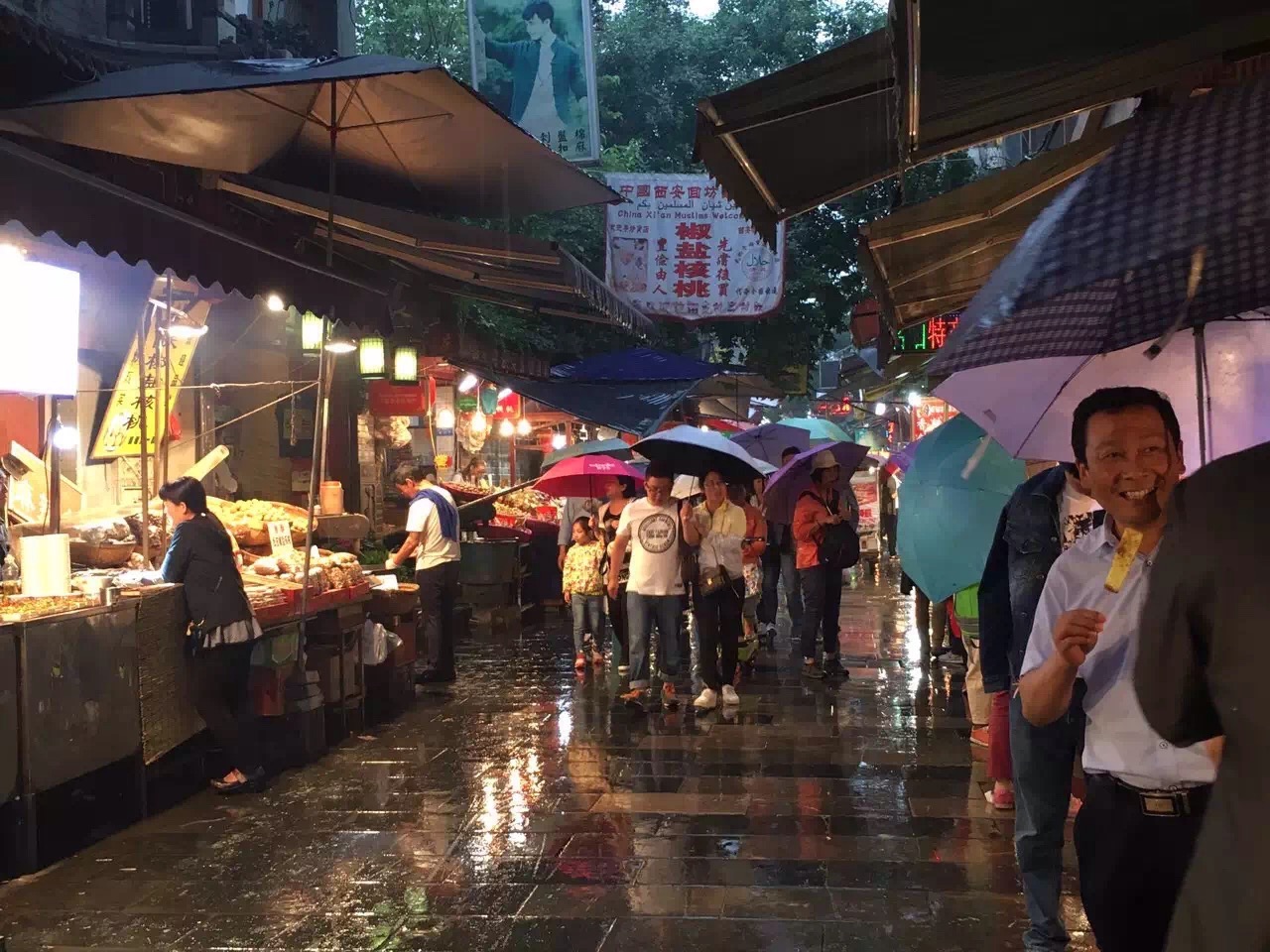
Steam rises from along the road. Vats of stews, braised sheep hooves, fried mini potatoes, and barbecued skewers jostle for space with giant discs of naan, dates, walnuts, and pomegranate juice.
I listen for the telltale thwack of “biang biang mian”, named for the sound (“biang!”) the wide, thick noodles make when their makers vigorously thump them by hand against the table to stretch the dough.
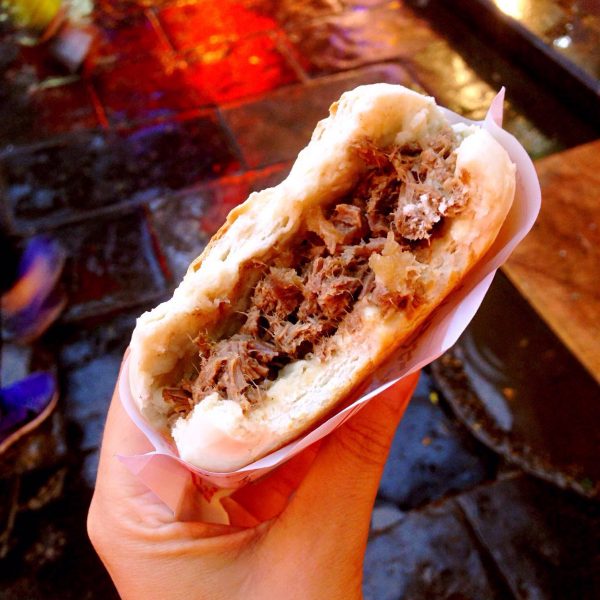 My coworker and I duck under the tarp sheltering a corner street stall, almost furtively sharing a hot, freshly prepared rou jia mou. Xian’s answer to the hamburger, the crispy bun is stuffed full of salty shredded beef (often pork in other cities, but we are, after all, in the Muslim Quarter) and served fresh and steaming.
My coworker and I duck under the tarp sheltering a corner street stall, almost furtively sharing a hot, freshly prepared rou jia mou. Xian’s answer to the hamburger, the crispy bun is stuffed full of salty shredded beef (often pork in other cities, but we are, after all, in the Muslim Quarter) and served fresh and steaming.
I continue down the street, my socks wet and my fingers chilled, on the hunt for the infamous yang rou chuan’r. Some students in our group call out to me; they’ve already found some of their own lamb skewers and are happily chowing down. I join them and order a stick.
It comes off the grill a few minutes later, fat, juicy chunks of lamb flavoured with a blend of spices including dried chili and cumin. I’m no stranger to late-night chuan’r adventures, but those skewers of the past – mangled, anemic looking things with questionable meat origins – pale in comparison. Here, we stand in a circle, completely satisfied, each of us focused on ripping lamb off a stick with our teeth.
Later, our energetic group of students and staff settle down to some yang rou pao mou at a restaurant towards the entrance of the walking street. We’re handed big discs of firm naan-like bread which we’re required to tear into tiny pieces by hand.
“It’s kind of like the Xi’an version of Starbucks,” one of our local partners tells me as we rip in unison. “You sit, you chat, you make your paomou. It’s something you can do together with friends.”
My
coworker quips, “It’s like pao mou and chill.”
Once our bowls are half-filled with dry shredded bread, they are whisked away. They don’t take long to return to us, the bread now fat and soft, having absorbed ladlefuls of rich, fatty, fragrant lamb broth with chunks of tender meat. It’s perfect for the cool evening; hot and so very filling.
Another night, we feast on local soup dumplings: guan tang bao. Guaranteed to explode on unsuspecting diners at just the wrong moment, they are nevertheless tasty and set themselves apart from Shanghai’s xiao long bao. Served on big bamboo steamers, these little jewels are filled with soup and meats like minced lamb, beef tail, prawn, and a variety of other flavours.
Between the bike rides, sight-seeing, and long days of our educational program, we eat well. It’s a carb-heavy diet. There’s a lot of lamb and the first thing I order when I get back to Beijing is a salad. But our time in Xi’an has been so much richer for what we’ve tasted, and despite the consistent rainfall throughout our trip, the flavours of Xi’an have left me warm – and all the more excited to return.
